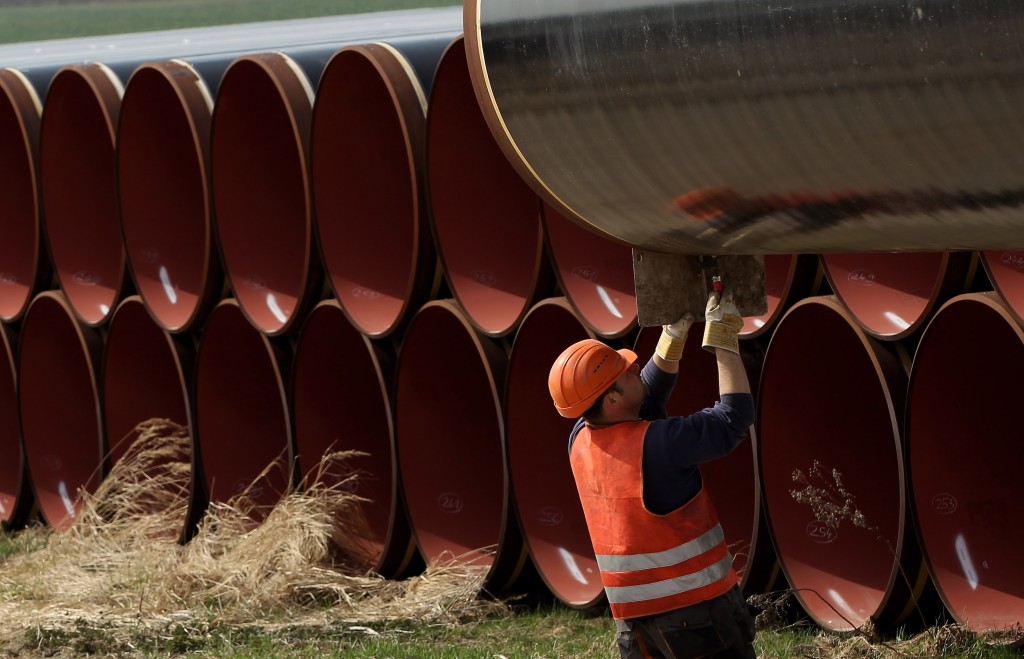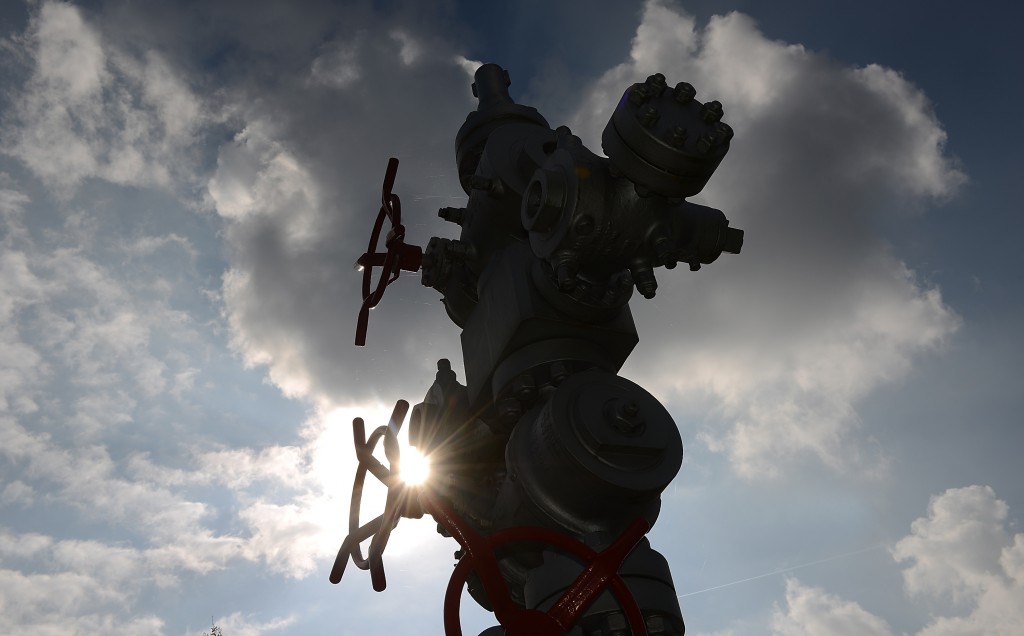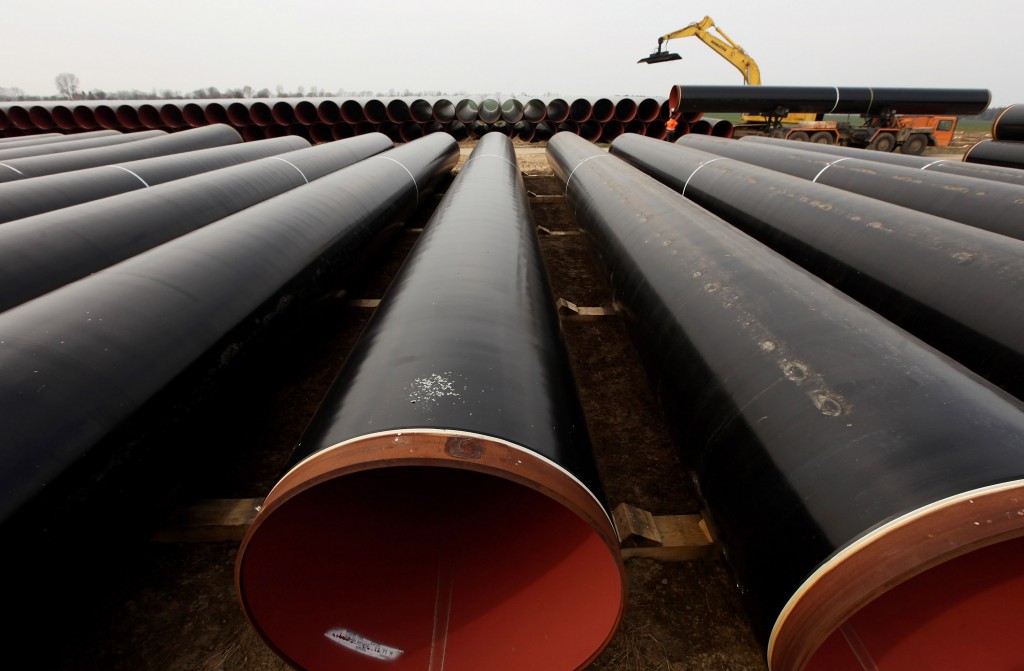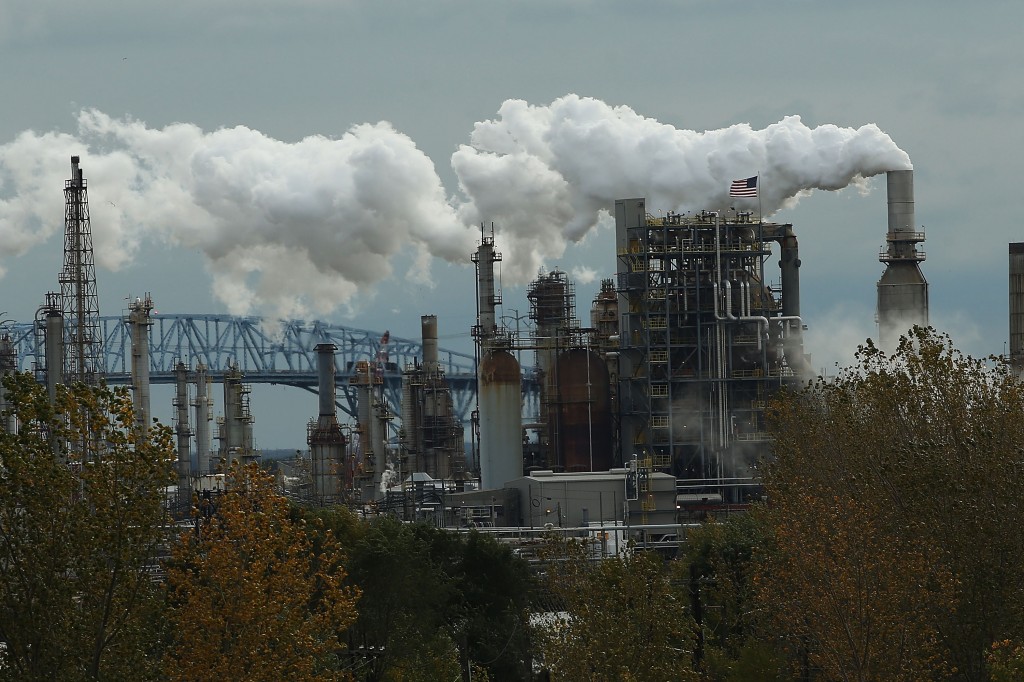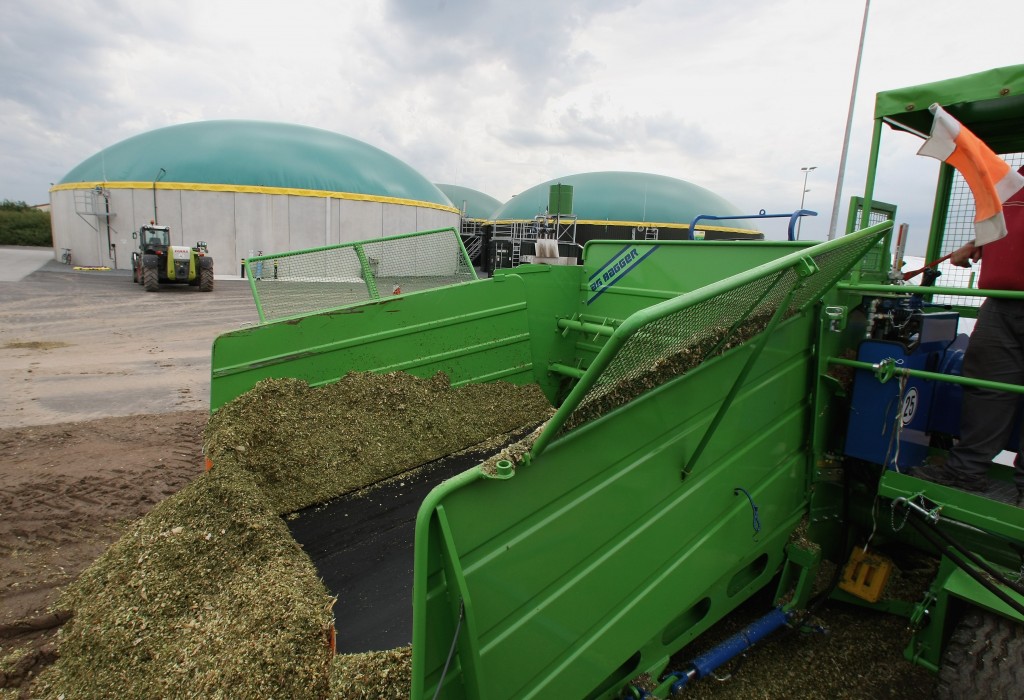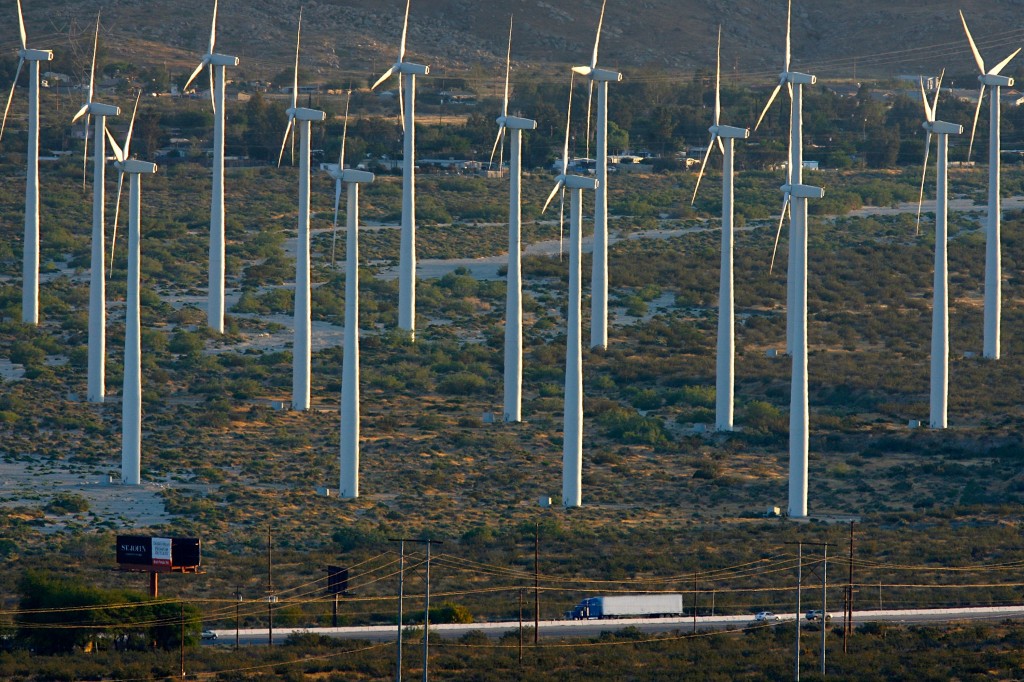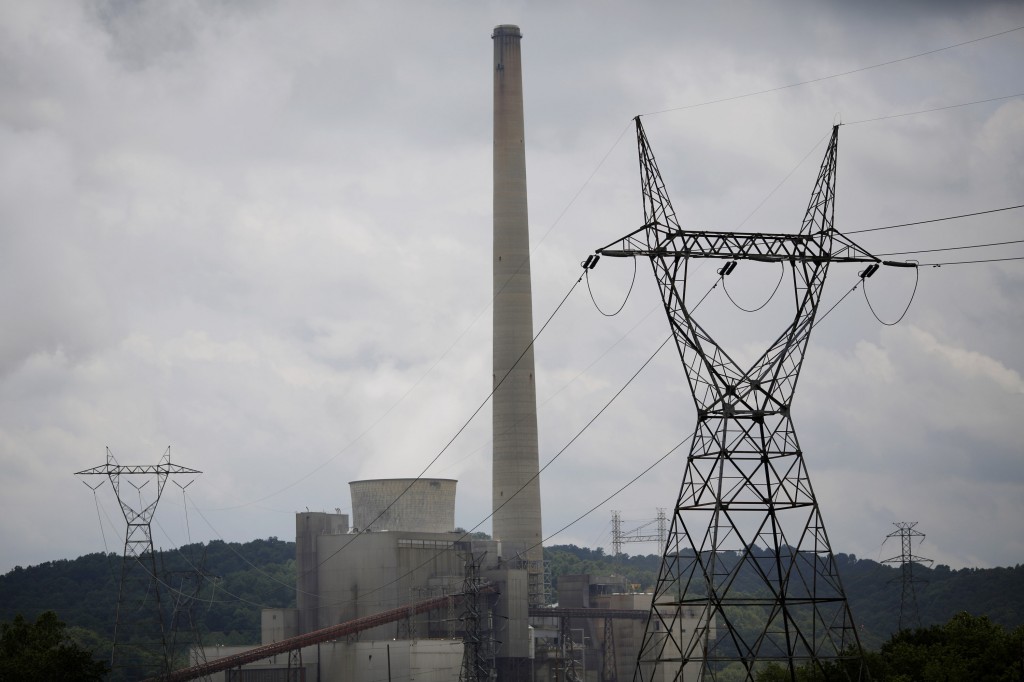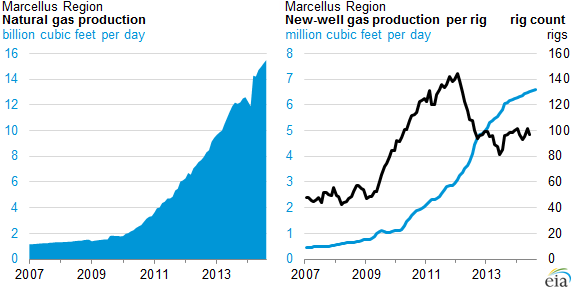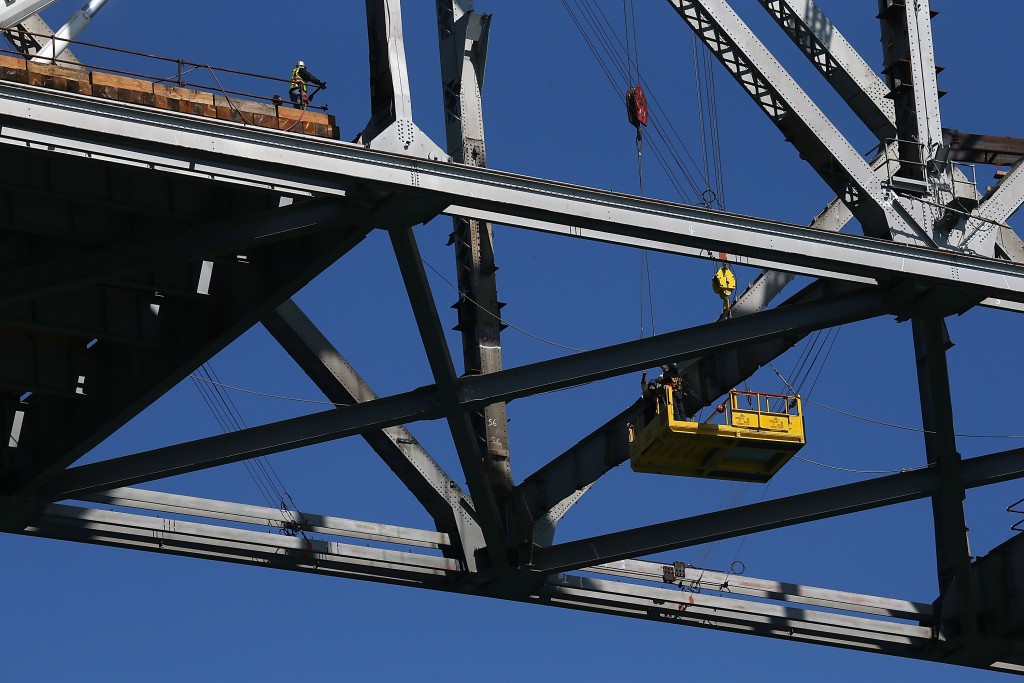By 2017, natural gas pipelines are projected to convert up to 32% of their pipeline capacity into the Northeast to support the bi-directional flow of natural gas out of the region to the South and West, according to a U.S. Energy Information Administration (“EIA”) December 2, 2014 report. It is well known that the increased production of natural gas in the shale plays of the Northeast have had a marked impact on the energy industry in the U.S. This EIA data shows us in hard numbers how drastic of an impact the shale boom has had on pipelines that historically transported natural gas into the Northeast: six pipelines transported 60% of natural gas into the Northeast in 2013, and 2013 volumes of gas transported into the Northeast on these six pipelines were 21%-84% lower than the volumes of gas they transported into the region just five years earlier. Several of these pipelines initiated the transition to handle bi-directional flows in 2013 and earlier this year.
Natural Gas
Natural Gas Pipelines to Bolster Bi-Directional Capacity in Northeast up to 32%, EIA Data Shows
By Brian Heslin | Moore & Van Allen PLLCSign up and get Breaking Energy news in your inbox.
We will never sell or share your information without your consent. See our privacy policy.Energy News Roundup: Methane Emissions Sources Identified, Weather Impacts Solar Profitability & $550M Vaca Muerta Investment
By Jared AndersonA new study conducted by the University of Texas at Austin in conjunction with the Environmental Defense Fund and 10 oil companies pinpointed methane emissions sources at natural gas production operations. “Researchers found 19% of pneumatic devices accounted for 95% of the emissions from those devices. Meanwhile, 20% of the wells that vent emissions to… Keep reading →
US Presidential Permits For Cross-Border Infrastructure
By Todd Griset | PretiFlahertyAs the U.S.’s international trade in energy grows, so too has interest in the process for securing a federally required approval known as a Presidential Permit.
The construction, operation, and maintenance of infrastructure that crosses the U.S.’s border with Mexico or Canada — think pipelines, transmission lines, and bridges — generally requires prior authorization by the federal government in the form of a Presidential Permit. How you obtain a Presidential Permit depends on the type of facilities in question, as permits may be issued by several federal agencies under different legal authorities.
Plans to turn Philadelphia city into an “energy hub” where natural gas from the Marcellus Shale would be pumped, processed, exported and used as fuel by manufacturers, were given a high-profile sales pitch at a one-day conference in the city last Friday. The Greater Philadelphia Chamber of Commerce and Philadelphia Energy Solutions, a local refiner,… Keep reading →
Natural gas use is growing throughout the world as new drilling techniques open up vast shale and other tight resources. The result is low-cost gas flooding the market. The environmental advantages of natural gas over other fossil fuels have put it in a favored position as emissions regulations continue to tighten around the world. But conventional… Keep reading →
Federal Proposal to Update Natural Gas Transportation Market Would Benefit Environment
By Environmental Defense Fund Energy Exchange BlogHow much does the design of America’s energy market affect the environment? More than one might expect. Last week, the Federal Energy Regulatory Commission (FERC), the agency responsible for regulating the wholesale natural gas and electricity markets, issued a proposed policy statement designed to encourage pipeline operators to replace their leakiest equipment: compressor stations. Reciprocating compressors are… Keep reading →
Energy News Roundup: Tax Extenders Bill Needs PTC, Noble to Ship Israeli Gas to Egypt LNG Plant & GOP Build Keystone Themselves
By Jared AndersonTax reform talk is heating up in Congress as they hurry to pass a tax extenders bill before year end. Iowa Senator Chuck Grassley wants the controversial wind energy production tax credit included in the bill. “I’m concerned about rumors that some are working to leave out or shorten the extension of the wind energy… Keep reading →
Energy Quote of the Day: ‘The Number of Megawatts is Simply not Replaceable in the Short Term with Renewables’
By Jared AndersonControversy is brewing as utilities consider “repowering” old coal-fired power plants across the US with natural gas. Several environmental groups initiated lawsuits to stop these plants from converting from coal to gas. Environmentalists want to shut the plants and replace the power they generate with renewables. Utilities argue this is not always possible, particularly in… Keep reading →
Energy News Roundup: Record Gas Output for Range, Scottish Wind Faces Subsidy Shortfall & Vattenfall Dances Around Coal
By Jared AndersonMarcellus shale gas producer Range Resources reported record production of 1.2 billion cubic feet per day equivalent of natural gas, but getting that gas to higher-value markets is proving a bigger challenge than producing it. “Executives quoted forecasts showing that between mid-2015 and 2018, pipeline companies are expected to add 34 Bcf/d of midstream capacity.… Keep reading →
Energy Quote of the Day: ‘Natural Gas is Often Described as a Bridge Fuel…How Long Should that Bridge Be?’
By Roman KilisekA new report released by the Canadian Pembina Institute and the Pacific Institute for Climate Solutions looks at British Columbia’s (B.C.) liquefied natural gas (LNG) strategy to serve the lucrative Asian gas market through the prism of global climate change in a carbon-constrained world. “Natural gas is often described as a bridge fuel. The question… Keep reading →
